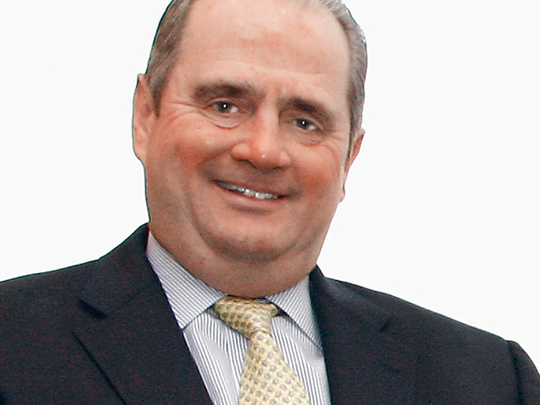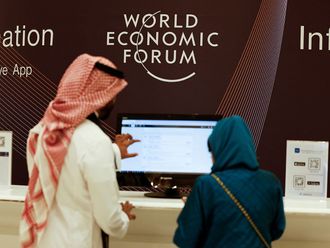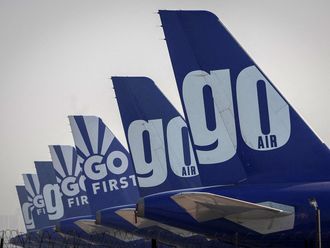
Dubai : The fate of a great global brand, American Life Insurance Company (Alico) — whether or not it will continue or disappear — hangs in the balance and this could be decided next year, a top official hinted.
Alico's parent company, American International Group (AIG) — the troubled US insurance and financial services conglomerate — on March 8, announced that it will sell Alico to Metlife for approximately $15.5 billion (Dh57 billion).
The transaction includes all of Alico, including the company's approximately 60,000 points of distribution, including agents, brokers and financial institutions; 12,500 employees across more than 50 countries; and 20 million customers worldwide, the company said recently.
Realigning
Metlife is expected to close the transaction in the fourth quarter of this year, following which it will realign global business and is expected to decide on Alico's fate sometime next year.
However, the big question in the minds of millions of Alico's customers worldwide remains — will Metlife allow this great brand to disappear?
Alico's top man could not give a straight answer.
"There isn't any straight answer to this. What we can say at this point of time that they [Metlife] are going to be very thoughtful on the branding," Rodney O. Martin, Alico's Chairman and CEO, told Gulf News in an interview.
The transaction also includes Alico's Global Benefits Network serving US and foreign multinationals. In 2008, Alico had total revenue of $32.3 billion and $1.3 billion in after-tax operating income. As of December 31, 2008, Alico had $89 billion in assets under management.
To many, life insurance is synonymous with Alico, just as Jeep is to a four-wheel drive vehicle.
"In some markets, I expect, Alico and Metlife will work together. It's not a ‘one size fits all' situation," he said.
"The acquisition gives Metlife easy excess to 50 new markets through Alico's great network.
Regional plans
"In the Middle East, which is a growing market, we expect Metlife and Alico to work together and offer new products and services. So we expect this synergy to bring in more business."
The US Federal Reserve on September 16, 2008, created an $85 billion credit facility to enable AIG to meet increased collateral obligations, in exchange for the issuance of a stock warrant to the Federal Reserve for 79.9 per cent of the equity of AIG.
The Federal Reserve and the US Treasury by May 2009 had increased the potential financial support to AIG, with the support of an investment of as much as $70 billion, a $60 billion credit line and $52.5 billion to buy mortgage-based assets owned or guaranteed by AIG, increasing the total amount available to as much as $182.5 billion. AIG subsequently sold a number of its subsidiaries and other assets to pay down.
Recalling the turbulent 18 months into the crisis, Martin said, "The road ahead was anything but straight. We spent more time in communication with our colleagues and customers.
"We did not have enough answers to questions in most cases. However, we are out of the situation now."
While the chips were down, morale also followed down south. However, Martin said, his team fought the situation together.
"It wasn't a walk in the park. There were challenges. However, we all knew it's a company worth fighting for," he said.
Growth continues
The Alico story began in 1921 in Shanghai, China. The company grew steadily in the early decades, moving its headquarters to Wilmington, Delaware in the late '60s.
In 1972 Alico became the first foreign life insurance company licensed to sell in Japan, the first step towards becoming a household name.
Expansion in Latin America, the Middle East and a liberalised European Union followed, and that growth story continues today. Alico now serves customers in over 50 countries.
How it all started
AIG history dates back to 1919 when Cornelius Vander Starr established an insurance agency in Shanghai, China. Starr was the first Westerner in Shanghai to sell insurance to the Chinese, which he continued to do until AIG left the country in early 1949 when China came under a communist regime. Starr then moved the company headquarters to its current home in New York City. The company went on to expand, often through subsidiaries, into other markets, including other parts of Asia, Latin America, Europe, and the Middle East. In 1962, Starr gave management of the company's lagging US holdings to Maurice R. Greenberg, who shifted its focus from personal insurance to corporate coverage. Greenberg focused on selling insurance through independent brokers rather than agents to eliminate agent fees. In 2005, AIG became embroiled in a series of fraud investigations.












